_huge.jpg)
Mindful Office Design by Andrew Mairs
How the design of a workspace can be optimised to promote mindfulness and foster positivity amongst people
We live in a time where slowly but surely the walls of stigma surrounding mental health issues are being torn down and people are beginning to have open conversations about the things that are impacting them. The volume of people affected by mental health issues will probably be surprising to you. According to the mental health charity Mind, 1 in 4 people in the UK are affected by mental health problems every year. This means in an office of 24 people, 6 of your colleagues are likely to be going through something whilst being expected to maintain peak levels of productivity in an office.
Last year Sky News published a report on mental health in the workplace, bringing to light some prodigious results. The study showed that in a survey of 3,000 employees 60% had experienced a form of mental health issue directly related to the workplace. Within that 15% said they had faced disciplinary action when attempting to raise the issue with management with some even being let go from their respective companies.

Whilst these statistics are shocking, the good news is the office environment doesn’t have to be a catalyst for poor mental well-being, it can be quite the opposite, promoting mindfulness and positivity with initiatives such as the WELL Building Standard changing the way we look at the buildings we inhabit so frequently. Launched in 2014 the WELL building standard implements, validates and measures the features of a building that support health and wellness, driven by the idea that “better buildings can lead to healthier people” – Rick Fedrizzi, CEO.
Office design goes hand in hand with standards such as WELL. Design can be leveraged to create a healthy, constructive environment perfect for fostering positivity amongst its occupants.
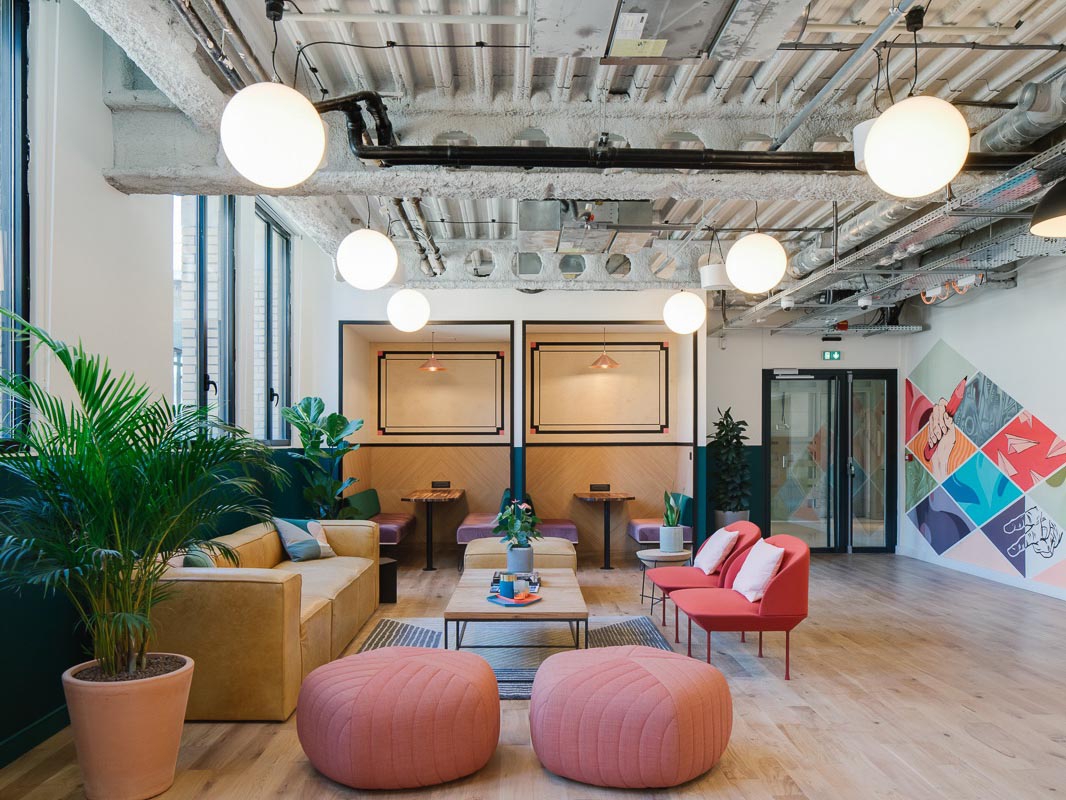
Furniture
Office furniture is one of the primary influencers on mental health within the workplace. It will come as no shock that the human body isn’t designed to be sat down for 8 hours a day. Combine this with poor posture an ineffective furniture and it can have a negative effect. So, companies began introducing standing desks and ergonomic task chairs, followed by the rise of resimercial design featuring domestic furnishings such as sofas and coffee tables with the aim to provide employees with different seating options that allow posture to be varied throughout the day and encouraging them to get up and move around whilst making the office feel more like home and promoting a more relaxed atmosphere.

Privacy
Noise, distractions and lack a of privacy like those found in open plan offices can add unnecessary stress to employees. That is not to say that every company should work in individual privatised offices or cubicles and avoid interactions at all costs, but it can be beneficial to ensure employees have access to spaces where they can ‘get away’ from the hustle and bustle of the office to really focus on the task in hand or to just get some peace and recalibrate. There are a whole host of booths, enclaves and pods available such as the Phonebooth and Railway Carriage from Spacestor.

Giving employees some control over their environment even simply dimming a light or changing the temperature will help add a more personal feel to the space making them feel like they have tailored the space to their needs which in turn would help improve mood and increase productivity.

Colour
Colour has been proven to influence a person’s mood. There has been a seemingly endless amount of studies undertaken on the subject ranging from how colours can affect students before taking exams to the effects different coloured uniforms have on professional athletes.
One study from the University of Texas, led by researcher Nancy Kwallek Ph.D. examined 3 colours and the impact they had on 90 employees. Workers in the red office displayed higher negative mood traits than workers in the white and blue offices. The study did however also find that a person’s reaction to colour may be dependent on the individuals characteristics and their environmental sensitivity with some workers becoming more productive in the red environment.
So what colours should be used in the office? It really depends on the desired effect. Blue is calming whilst promoting concentration and focus.
Yellow and Orange are perfect for creatives as they stimulate the production of ideas.
Reds can be used to rally employees undertaking physical tasks but as mentioned isn’t the best choice for promoting calm and helping with stress, depression or anxiety.
The effects of Green on a person are dependent on shade. Lighter shades can help ease anxiety and create a welcoming feel to the office.
One colour to steer clear of is white. White creates a sterilised, surgical feel which can have a negative effect on people when used on a large scale and not supported by other colours.
Tailoring colour to specific departments and the work they undertake is a simple way to improve the mood in the office and contribute to that overall goal of improving well-being.

Biophilia
Biophilia is the idea that humans possess a hardwired tendency to search for connections with nature and other forms of life. This link between humans and nature is the keystone in biophilic design where the aim is to bring the outside in. It has been proven time and time again that plants, flowers and other greenery have a positive effect on us as humans, helping to improve mood, memory, ADHD, stress, anxiety, inflammation and immunity just to name a few.
Something as simple as installing some potted plants in the office is a good way to start and can aid in the reduction of employee absence.

Lighting
Lighting is an important and sometimes overlooked aspect of creating a positive work environment for employees. For time spent in the office poor or harsh lighting can be detrimental to productivity and health, causing eye-strain, lack of focus and potentially migraines due to the eyes having to work overtime so finding a balance is key.
Whilst not always the most achievable, the most beneficial option is to utilise natural light as much as possible. Where artificial light is used it is important to make sure that there isn’t any glare on computer monitors and that light can be controlled as much as possible.
Healthy and content employees are crucial to the running of a successful business so the environment they work in is just as much a tool of the job as computers or phones and whilst it can be challenging it’s important to get it right not only for the benefits to the business but because a person’s health and well-being should always be a priority.
by Andrew Mairs | Officeinsight
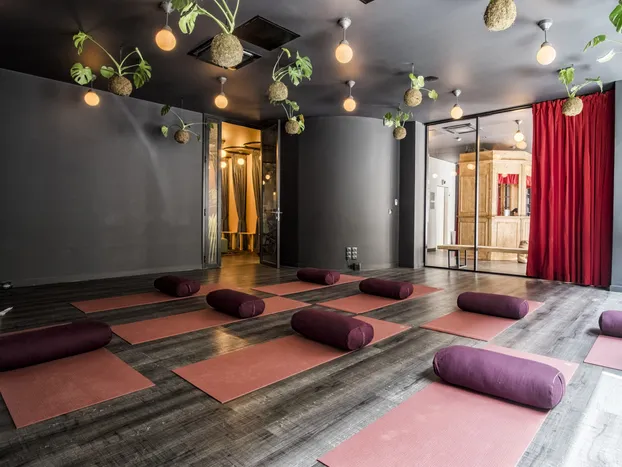
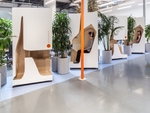

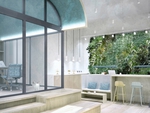
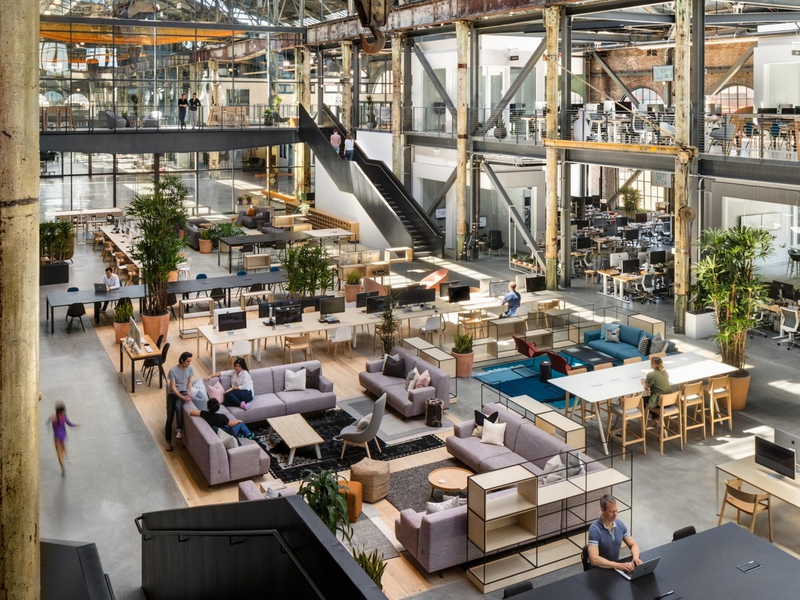
Gusto, la start-up basée à San Francisco, en collaboration avec les architectes de classe mondiale Gensler, a créé de g…
TECHNOLOGIE & INFORMATIQUE
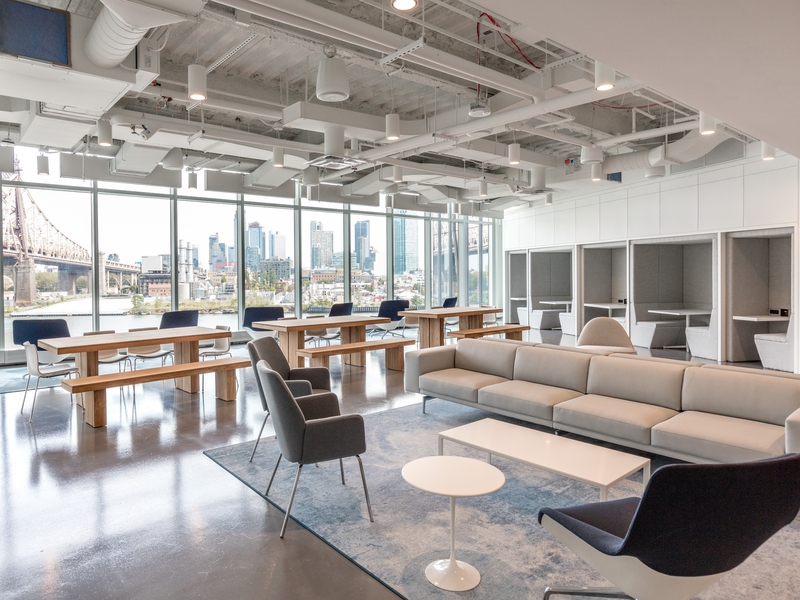
Le premier campus jamais construit de l'ère numérique, rassemblant l'académique et l'industriel pour créer des pionnier…
EDUCATION
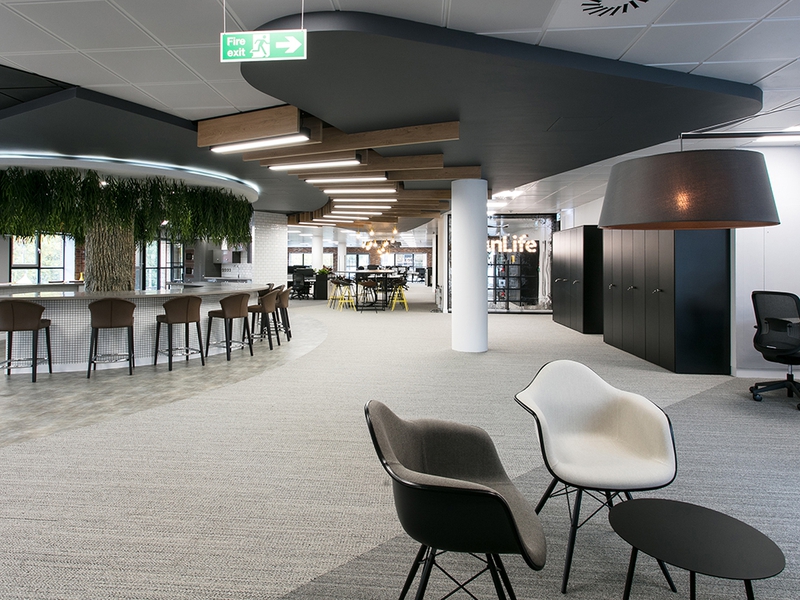
Le nouveau siège social de la société d'assurance vie Sunlife, autrefois un entrepôt de savon et de vinaigre, maintenan…
SERVICES FINANCIERS